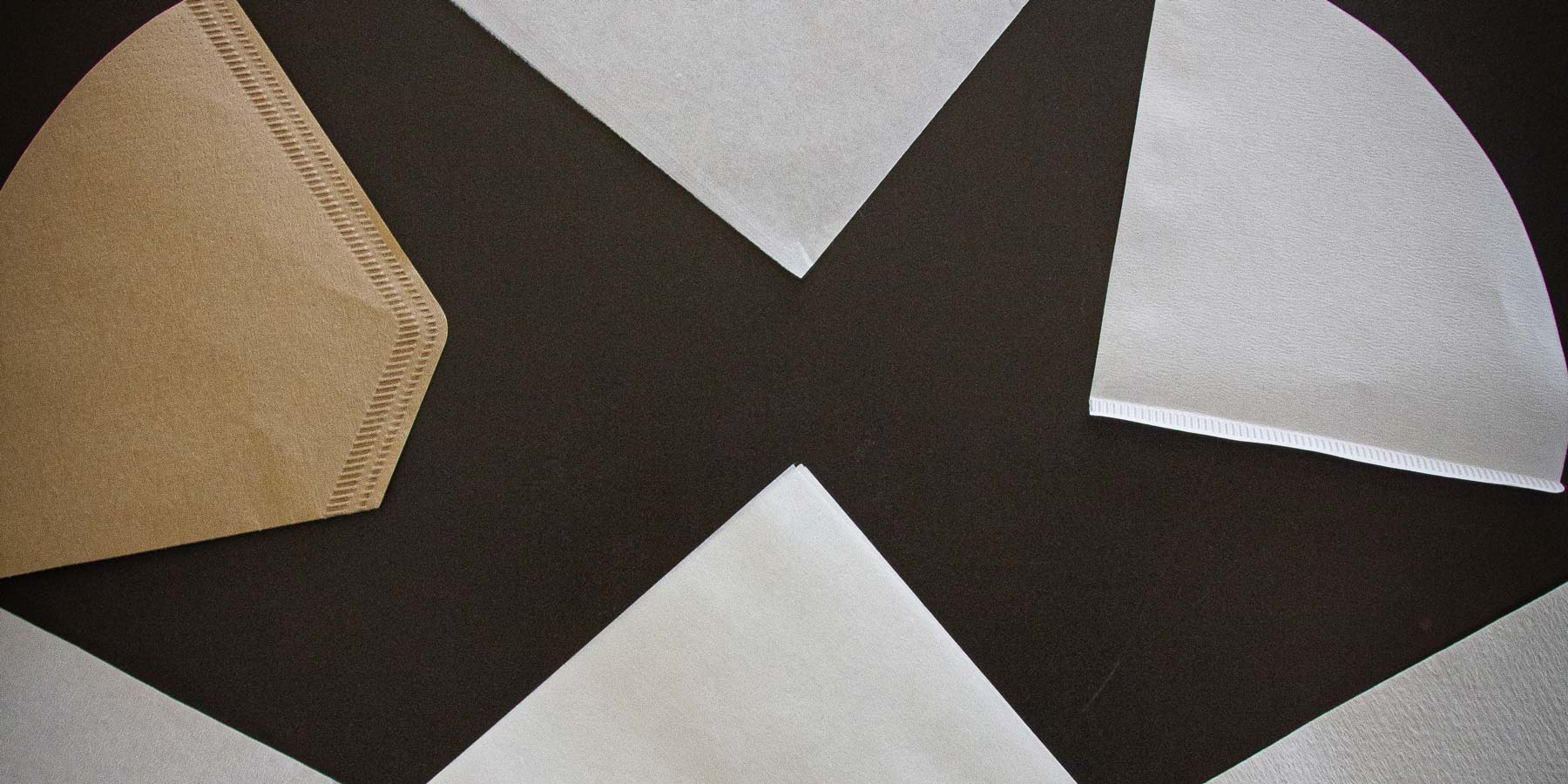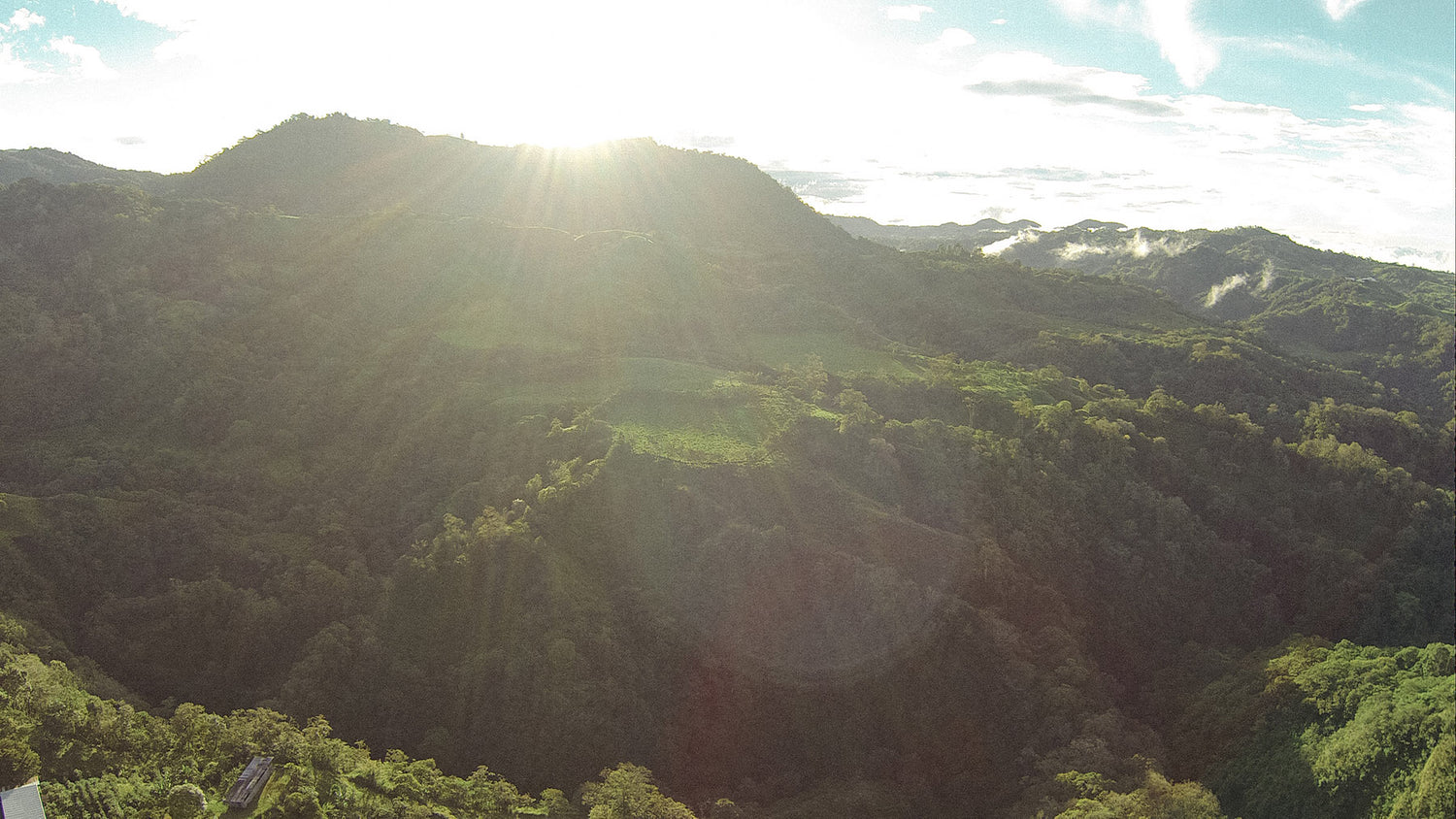People all over the world have been consuming coffee for hundreds of years. One preparation method that has made a big comeback in specialty cafés and among coffee lovers in recent years is using a hand filter . With its clear, light, yet strong taste and the filtered-out bitter and suspended particles, filter coffee is enjoying increasing popularity in the international coffee scene. In this blog article, we are conducting a coffee filter paper test. Have fun!
Do you want to know how to optimally dose and prepare your coffee in a hand filter? Then take a look here !
Coffee filter paper test - The origin of the filter
The paper filter that we all know today actually originally comes from Germany. In 1907, Melitta Bentz from Dresden was bothered by the coffee grounds in her cup. So she looked into the topic more closely. She quickly started drilling holes in a tin can and tried out a number of different materials. In the end, Melitta Bentz used blotting paper from her son's school exercise book , which she cut into shape and placed on the bottom of the tin container. This is how the Melitta filter bag that we are familiar with today was created. In 1908, Bentz patented her new filter paper and started the business, which was still family-run at the time. The company has since become a major global corporation .
But as with the many ways of preparing filter coffee, there are also some differences in the filter papers. Inspired by the international coffee expert James Hoffmann, our baristas have carried out a detailed coffee filter paper test with various V60 filter papers from our shop and under the following criteria. But what does V60 actually mean? V60 stands for a V-shape of the filter with an angle of 60°. Now that all the terms and facts have hopefully been clarified, let's get to our coffee filter paper test. Have fun!

Coffee filter paper test - which papers are available for comparison?
In the following coffee filter paper test we compared these products from our shop:
Hario V60 filter paper , Chemex filter paper , CAFEC Abaca filter paper , Slow Coffee Style filter paper Kinto , Sibarist filter paper and Melitta filter bags.
Coffee filter paper test - material & texture
Hario V60: The V60 hand filter from Hario is made of very high-quality Japanese paper . It is oxygen bleached and stands out from other coffee filters due to its fine pores and high density.
Chemex filter paper: The Chemex filter is around 20-30% thicker than other filter papers. It has very fine pores and is oxygen bleached . The thickness of the special paper means that the coffee's natural suspended particles and oils are perfectly bound and filtered out. This ensures a very aromatic and absolutely not bitter end result. The Chemex is also referred to as a unique preparation method , as the full flavor is extracted from specialty coffee .
CAFEC Abaca: In contrast to other hand filters, the CAFEC Abaca filter paper is made of very thin paper , which is made from a mixture of Manila hemp (Abaca) and wood pulp . The very elastic paper is biodegradable and gently oxygen-bleached . It feels similar to Hario paper in the hand, although the CAFEC paper still seems significantly thinner and a bit more flexible. The porosity is a bit coarser compared to the hand filters from Hario and Kinto.
Kinto Slow Coffee Style filter paper: The filter paper from Kinto's Slow Coffee Style series is made from a mixture of cotton and wood cellulose . This paper is also very fine-pored and rather thin. Compared to the papers from CAFEC and Hario, however, the filter is a shade thicker. It still makes a high-quality impression and fits perfectly with the philosophy of the Kinto Slow Coffee Style series: conveying a slow, thoughtful lifestyle.
Sibarist filter paper: The Sibarist filter paper is made from 100% organically grown raw materials in Barcelona. The filter feels almost like fabric and has probably the finest pores of the filters we tested, which ensures a faster drainage speed. Similar to the filters from CAFEC, the filters are made of abaca hemp, cellulose fibers and polylactic acid (bio-plastic) . The filter is just much thicker than the CAFEC filter.
Melitta filter bag: The oldest version of the coffee filter is made of thicker, unbleached paper. Compared to the other filters, the paper feels significantly thicker (except for the Chemex filter). The pores are also much coarser than the versions from Kinto or Hario, for example. You immediately notice that this is more of an everyday product .

Coffee filter paper test - taste
Let's get to the taste comparison of our coffee filter paper test. We let all filters steep in hot water for 10 minutes and tasted them in the style of cupping, inspired by James Hoffmann's filter comparison video. The result we came to is as follows:
Hario V60: The Hario V60 filter paper initially has a slight woody sweetness. Nevertheless, we rate the taste as relatively neutral.
Chemex: The Chemex paper has a rather strong paper taste. Of course, you must not forget that the paper filter is significantly thicker than its competitors. Therefore, we would rate the taste as quite neutral.
CAFEC: The thinnest paper in the bunch really impressed us. You can practically taste no paper at all.
Kinto: The filter from the Slow Coffee Style series has a very sour note. In general, we would describe the taste as rather bland.
Sibarist: The hand filter from Sibarist hardly has any aftertaste. It is almost tasteless, only a very slight sweetness is noticeable.
Melitta: The filter bag has a distinct paper taste. It should be noted that this is a filter that is not usually used in the specialty coffee scene. Nevertheless, we were not convinced by the taste in comparison.
Conclusion!
In our coffee filter paper test , all papers were of very high quality in terms of the feel and paper quality . The biggest differences are noticeable in the taste and texture. The comparison between the unbleached paper from Melitta and the other oxygen-bleached papers is particularly significant. Unbleached paper has a very sticky taste , which can have a major impact on the end result of a pot of filter coffee.
Paper made from hemp was the least flavorful in our coffee filter paper test. That's why we always recommend using unbleached paper, preferably made from hemp. The texture and thickness of the paper also determine the taste of the filter coffee . Ultimately, the porosity, fiber structure and thickness determine how natural suspended particles and oils in the coffee are bound. These are only really visible under a microscope, but they have a decisive influence on the final taste of the coffee.


